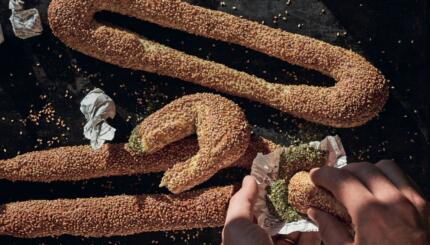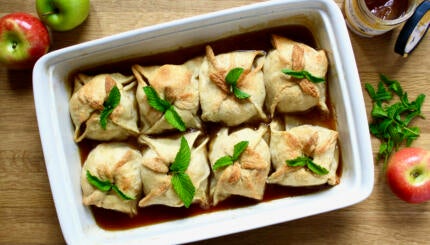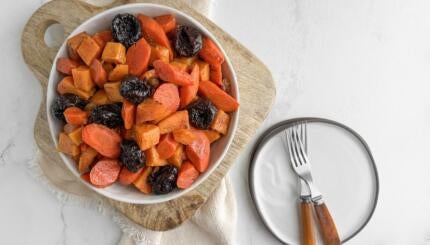In its simplest form, Passover is a holiday that commemorates the Israelites’ journey from slavery to freedom. During the seder we do things that indicate how we were slaves in the land of Egypt and also how now we are free. For instance, we eat matzah (the bread of affliction) and bitter herbs to signify our slavery, yet we eat them while reclining during a lavish and festive meal that is a privilege of our freedom. From this we can learn that while we should remember our people’s past as if it was our own, we should not become so mired in their despair that we forget our wonderful, thriving lives.
This lesson of experiencing the pain of our ancestors without taking on too much of their pain applies perfectly to how we eat on Passover. Most of us only tolerate matzah, and we make matzah kugel, matzah pizza, and matzah lasagna because that’s what we’ve always made…and we’re supposed to eat a lot of matzah, right? Well, not necessarily.
Although it can be fine to include matzah in some things over the holiday, we don’t necessarily have to overly oppress ourselves with its dry texture and flavorless taste (or the tummy troubles that result in the over-consumption of matzah). We can look at the Passover food guidelines as an opportunity to recognize the oppression of the Israelites (by not using certain items) to come up with new, interesting foods to eat. Instead of matzah meal cookies, try some flourless chocolate and walnut cookies (recipes are everywhere). Instead of matzah kugel, why not try a sweet potato soufflé? Instead of matzah pizza, try eggplant parmesan (breaded with ground walnuts and almonds). And instead of matzah brie or Passover cereal for breakfast, try the idea below for an amazing hot breakfast quinoa (like steel cut oats, but better!).
If you and your kids need more clarity on how to simultaneously experience freedom and slavery in your Passover food, just look to camp. Counselors and staff members know that one of the most amazing and challenging parts of camp is coming up with creative and interesting programming under the constraints of rules, schedules, resources and space. Often, the most innovative and fun programs at camp are borne under those constraints, and it is in that space that we can learn the most about slavery and freedom and how to dance between the two. Perhaps as you sit over your bowl of hot quinoa with your kids you can discuss the essence of this interesting aspect of both camp and Passover- that often it is in the times of our greatest oppression or constraints that we are able to break through and come up with new, innovative, and freeing (and delicious!) ideas.
Breakfast Quinoa
Serves 4
Ingredients
3 cups 1% milk
1 cup quinoa
¼ teaspoon salt
4 teaspoons honey
4 teaspoons dark brown sugar
½ teaspoon ground cinnamon
1 teaspoon vanilla
½ cup mixed dried fruit and nuts
Instructions
- Bring milk to a boil over medium high heat- be careful not to let it boil over!
- Add the quinoa the salt, stir once, cover and turn the heat down to very low.
- Simmer about 15 minutes until most of the liquid is absorbed, then stir in the remaining ingredients and re-cover for 1 minute.
- Serve hot or put in refrigerator for up to 1 week and reheat.
Like this post? Join the conversation through MyJewishLearning’s weekly blogs newsletter.
seder
Pronounced: SAY-der, Origin: Hebrew, literally "order"; usually used to describe the ceremonial meal and telling of the Passover story on the first two nights of Passover. (In Israel, Jews have a seder only on the first night of Passover.)



